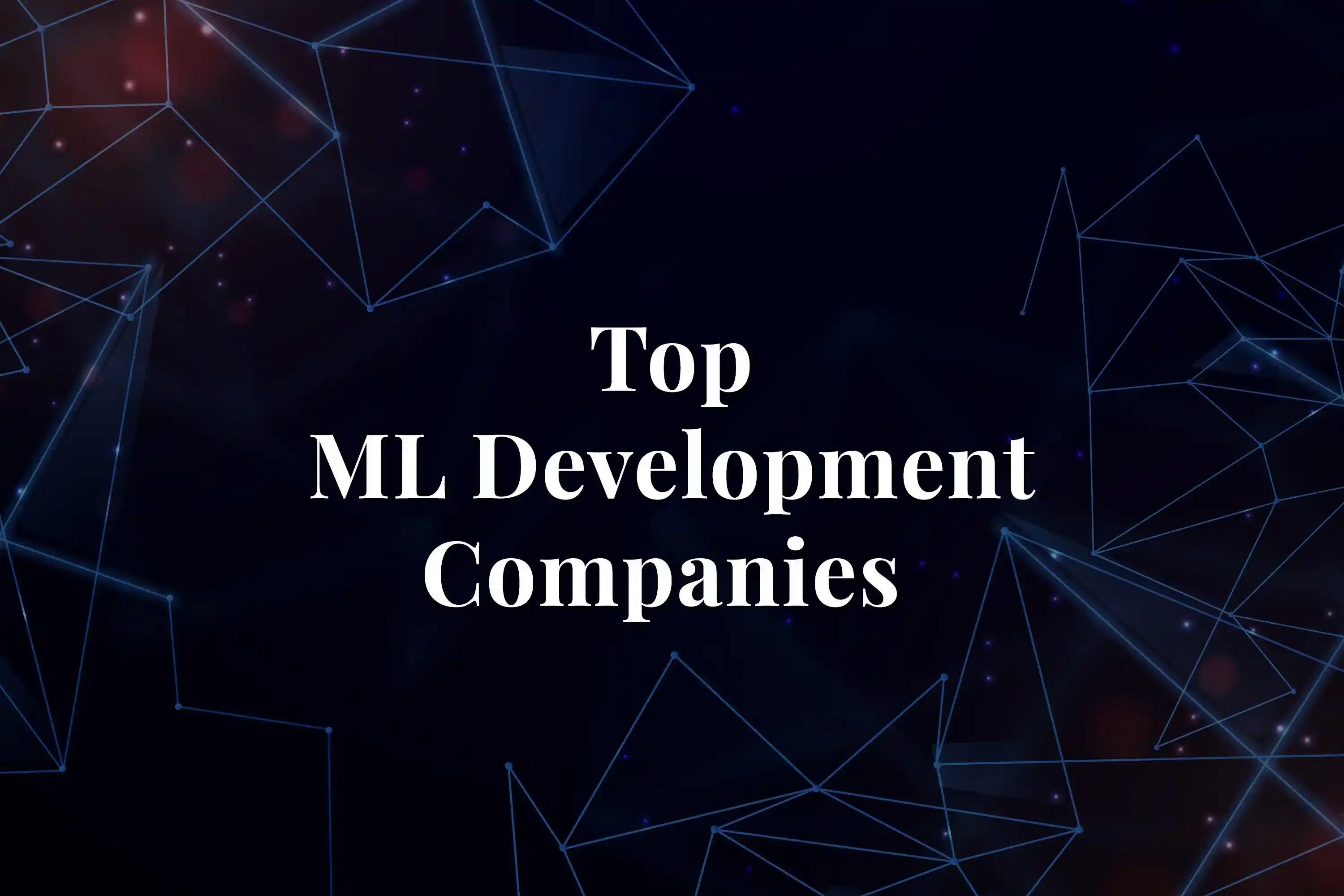Are you thinking about bringing a Machine Learning (ML) expert on board? That's a big step in the right direction, especially in this fast-evolving digital world. What can you realistically anticipate from this collaboration? Let's break it down.
First off, it's natural to have questions. Is this specialist truly equipped to grasp your business requirements? How will they transform your existing processes with AI? And most importantly, what tangible benefits will this collaboration bring to your table? These are critical points every business leader ponders. PwC forecasts AI could add $15 trillion to the global economy by 2030, highlighting its immense potential.
The duties of ML consultants extend beyond mere data analysis and coding. It's about bridging the gap between advanced AI strategy and real-world business innovation. Whether you're a tech-savvy company or just dipping your toes into digital transformation, an ML expert can be the guiding light you need.
In this article, we'll walk you through each step of the journey with an ML expert. Starting from the initial evaluation and goal-setting, through data examination, choosing the right model, and further steps. We're talking about integrating ML seamlessly into your business, ensuring smooth deployment, and providing ongoing support. And let's not forget the big picture – measuring the success and ROI of your AI ventures.
Initial Assessment and Goal Setting
When you start your journey with a Machine Learning (ML) expert, the first step is like setting out on a road trip: you need to know where you're going and how to get there. This phase is all about laying down a solid foundation. Let's unpack what this involves
- Project Assessment
It's like taking a good, hard look under your business's hood. What's working well? Where could you use a boost? This isn't just chit-chat; it's about understanding the nitty-gritty of your business to tailor the ML solution that fits just right. - Goal Definition
This stage is crucial for identifying your objectives. Do you aim to enhance operational efficiency, increase sales, or derive more meaningful insights from your data? Setting clear, achievable goals is key. It's like plotting your destinations on a map before hitting the road. - Strategic Planning
With goals in hand, it’s time to chart the course. This involves strategic planning on how ML can meet your business objectives. It's not about fancy tech jargon; it's about practical steps that align with your business's heartbeat. - Setting Goals for ML Projects
This is where you get specific. What does success look like? How will you measure it? Setting specific, measurable goals for your ML project makes sure everyone's on the same page and driving toward the same destination. - Initial Consultation Process
Think of this as a brainstorming session where ideas fly around, and possibilities take shape. This phase is for raising queries, expressing doubts, and feeling enthusiastic about prospects. - Defining ML Objectives
Now it's time to get down to brass tacks. What specific ML objectives will support your broader business goals? This step turns lofty ideas into concrete plans. - Strategic Assessment in ML
Finally, a thorough strategic assessment ensures that the ML solution aligns with your business culture, technical infrastructure, and long-term vision. It’s about making sure the solution fits not just for today, but for where you're headed in the future.
Data Analysis and Preparation
After setting your goals, the next leg of your journey with a Machine Learning (ML) expert is all about data – the fuel that powers your ML engine. Here's what this crucial step involves:
- Data Collection
First up, gathering data. It resembles embarking on a quest for treasure within your business environment, seeking valuable data ranging from sales records and customer opinions to social media interactions. This isn't just a routine sweep; it's a meticulous quest to gather the raw materials for your ML project. - Data Cleaning
Now, not all data is ready to use. Some of it might be incomplete, outdated, or just plain messy. That's where data cleaning comes in. Think of it as polishing your newly found treasures, making sure they're in top shape for the journey ahead. - Data Analysis
This is where things get interesting. Analyzing business data isn't just about looking at numbers and charts; it's about uncovering stories and patterns that you didn't know existed. It's like decoding a secret language that holds the key to your business's potential. - Data Preparation
Preparing data for ML is a bit like packing for an expedition. You need to organize, format, and transform your data into a form that your ML tools can work with. This step ensures that your journey is smooth and your tools are ready to hit the ground running. - Analyzing Business Data
Here, you dive deeper into your data pool. It’s about understanding the nuances of your business through the lens of data. Consider what your data reveals about your clientele, operational procedures, and market tendencies. Such insights are priceless. - Data Processing in ML
With all the prep work done, it’s time for data processing. This is where your data is fed into ML algorithms. This juncture marks the beginning of data's journey towards becoming practical insights. - Importance of Quality Data
Last but not least, remember that the quality of your data is crucial. Quality data leads to reliable insights, which in turn, power successful ML solutions. It's the foundation on which the entire ML structure is built.
Selection of Appropriate Machine Learning Models
With your data primed and ready, the next step in your journey with a Machine Learning (ML) expert is like choosing the right vehicle for a road trip – selecting the most suitable ML algorithms for your project. Here's how this crucial decision is made:
- Understanding ML Algorithms
The ML world is brimming with different algorithms, each with its strengths. It's about understanding these algorithms – like knowing the difference between a sports car and an SUV – and picking the one that’s best suited for your journey. - Model Selection
This isn't a one-size-fits-all situation. Choosing ML models involves matching the unique characteristics of your data and your business goals to the right algorithm. The procedure is meticulous, ensuring the selected model is in perfect harmony with your objectives. - Predictive Analytics
If your goal is to predict future trends, like customer behavior or sales patterns, models specialized in predictive analytics come into play. They’re like the GPS systems of your ML journey, helping you navigate the future. - Algorithm Selection Best Practices
This step is grounded in best practices. It involves evaluating factors like the size and quality of your data, the complexity of the task, and the level of accuracy needed. The decision-making process involves weighing technical capabilities against the practicalities of your business needs. - ML Model Suitability
Last but not least, suitability is key. The chosen model must not only be technically sound but also practical and scalable. It’s about ensuring the model fits into your business landscape as seamlessly as a glove.
Development and Training of Models
Once you’ve picked the right ML model, it’s time to roll up your sleeves and get down to the nitty-gritty: model development and training. This phase is where your ML project starts to come to life. Let’s break down what this involves:
- Model Development
Think of this as building the engine of your car. Developing ML models is about crafting algorithms that are tailored to your specific data and goals. It's a process of construction, refinement, and tuning to get everything running just right. - Training Data
The effectiveness of your ML model hinges on the quality of the data it is trained on. Training data is like the fuel for your ML engine. It involves a compilation of examples that instruct the model in prediction making or decision processes. The quality and relevance of this data are crucial for effective learning. - Machine Learning Training
Now, it's time to start the engine and see how it runs. Training ML algorithms involves feeding them your training data, allowing them to learn and adapt. It's like a trial run to see how well your model can predict or classify based on the data it has seen. - Model Optimization
After the initial training, the model might need some fine-tuning. Optimizing ML models is about adjusting and tweaking them to improve their performance. It's a bit like tuning a car's engine to get the best performance. - ML Model Development Process
This entire process is iterative and collaborative. It involves testing, feedback, and improvements. Developing ML models isn’t a one-off task; it’s a cycle of refinement and optimization to ensure the model performs at its best.
Integration with Existing Systems
Now that your ML model is developed and trained, it's time for a crucial step: integrating it into your existing systems. This is where the rubber meets the road, as we ensure the model plays nicely with your current IT infrastructure and business processes. Let's explore what this involves
- System Integration
This is like fitting a new part into a well-oiled machine. Integrating ML models into your existing IT landscape requires a careful approach to ensure compatibility and efficiency. It's about making the new and old work together in harmony. - IT Infrastructure Consideration
Your existing IT setup is crucial here. The integration process considers the specifics of your current technology infrastructure to ensure that the ML model can be seamlessly incorporated without disrupting your ongoing operations. - Technology Integration
This isn’t just a technical task; it’s a strategic one. The goal is to align the ML model with your business’s tech ecosystem in a way that enhances, rather than complicates, your workflows. - Business Process Alignment
The ML integration must align with your business processes. This means tweaking both the model and processes, if necessary, to ensure they complement each other. - Seamless Integration in Business
The end goal is a smooth, seamless integration where the ML model feels like a natural extension of your existing systems, enhancing capabilities without causing disruption.
Testing and Validation
After integrating the Machine Learning (ML) model into your systems, we reach a crucial checkpoint: Testing and Validation. This is where we ensure everything works as it should, kind of like taking a car for a test drive after fitting a new engine. Let’s go through what this phase entails
- Model Testing
First up, we put the model through a series of tests. This is like checking all the gears in our new engine, ensuring everything runs smoothly. Evaluating ML algorithms includes testing them in diverse situations to observe the model's performance under various conditions. - Validation Process
Think of this as a quality check. The validation process assesses the model against real-world scenarios and data. It's about confirming that the model not only works in theory but also delivers in practice. - Accuracy Testing
Accuracy is key in ML. This step involves evaluating how well the model predicts or classifies data. It’s like making sure our new engine doesn’t just start but also gets us to our destination reliably. - Performance Evaluation
Here, we look at how the model performs in terms of speed, efficiency, and resource usage. It's not enough for the model to be accurate; it needs to be practical too. - Validating ML Models
Validation is all about ensuring the model is dependable and does what it’s supposed to do.
Deployment and Implementation
The deployment and implementation phase is like the grand opening of a new store – it’s time to unveil your ML solution to the world. Here’s how this crucial stage unfolds:
- Model Deployment
This is the big moment. Deploying ML models is about moving them from the testing environment to the real world. It’s like taking a new car out on the open road for the first time. - Implementation Strategy
A good plan is key. The implementation strategy ensures that the deployment is smooth and that the ML solution integrates seamlessly into your daily operations. - Operational Deployment
This is where your ML model starts to do the heavy lifting. Operational deployment is about the model working in real-time, processing data, and making decisions as part of your everyday business process.
Ongoing Support and Maintenance
Embarking on an ML journey doesn't end with deployment. Like any sophisticated system, it requires ongoing support and maintenance to ensure it continues to run smoothly. Here's what this essential phase looks like:
- Technical Support
Post-deployment, technical support is crucial. This ensures any technical hiccups with the ML model are promptly addressed, keeping your operations running without a hitch. - Model Maintenance
Regular maintenance of your ML model is key. This involves monitoring its performance, updating it with new data, and making adjustments as needed. Think of it as routine service checks to keep your ML engine in top shape. - Continuous Improvement
The world of ML is ever-evolving. Continuous improvement of your model ensures it stays current with the latest advancements and adapts to changing business needs and market conditions. - Support Services
Comprehensive support services ensure that expert help is always available, ensuring your ML system operates at its best. - Ongoing ML Support
This ongoing support is about more than fixing bugs; it's about optimizing the model to deliver consistent, improved outcomes over time.
Measuring Success and ROI
The success of your Machine Learning (ML) journey isn't just a feeling; it's something you can measure. Here's how you know your engagement with an ML expert is paying off:
- Success Metrics
Setting specific success metrics from the start helps in quantifying the impact of your ML project. Whether it's increased sales, improved customer satisfaction, or reduced operational costs, these metrics are your scorecard. - ROI Analysis
The return on investment (ROI) is crucial. ROI analysis involves looking at the gains from your ML project versus what you've invested. It's about understanding the financial benefits of your ML initiatives. - Performance Metrics
These are the yardsticks to measure the effectiveness of your ML model. How accurately does it predict outcomes? How much has it automated previously manual tasks? These performance metrics give you a clear picture. - Business Impact
Beyond numbers, it's about the overall impact on your business. Has the ML project streamlined your processes? Does it give you a competitive edge? This is where you feel the pulse of the project's true value. - Evaluating ML Performance
Continuous evaluation helps in understanding how well the ML model adapts and improves over time, ensuring long-term effectiveness.
Wrapping Up
Bringing a machine learning expert on board is a smart move for any business. It's not just about getting advice on machine learning; it's about staying on top of AI trends to keep your business ahead of your competitors. The whole process, from the first check-up to rolling things out and then keeping them running smoothly, involves careful steps designed to meet your unique business needs. What's amazing about this is how the right tools and approaches in machine learning can seriously boost your business's efficiency and growth. getting into machine learning is important for businesses looking to succeed. Keeping up with AI and weaving it into your business strategies isn't just a good idea, it's a must-do in our world that's so driven by data.
Unlock the full potential of your business with Codiste, the top ML consultant in the USA. Our expert team leverages cutting-edge machine learning techniques to drive innovation, optimize operations, and create unparalleled competitive advantages for your enterprise. Partner with Codiste today.






